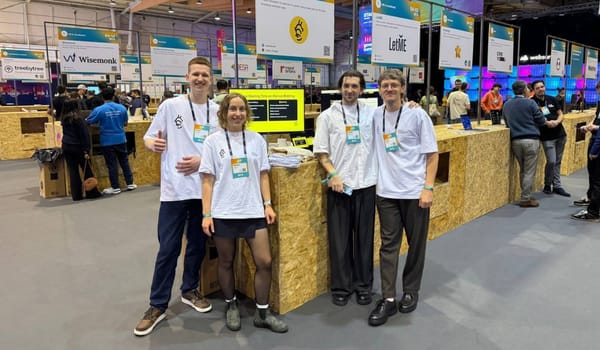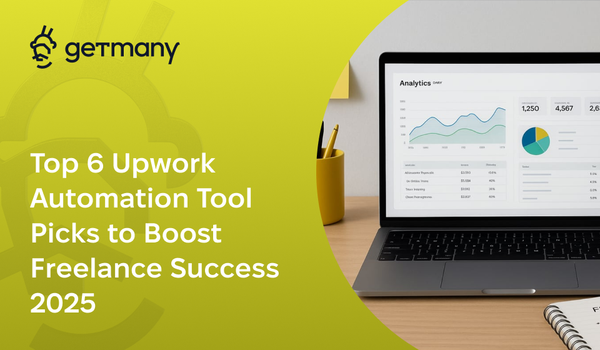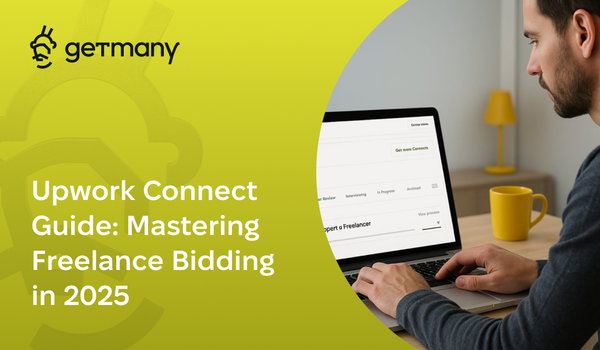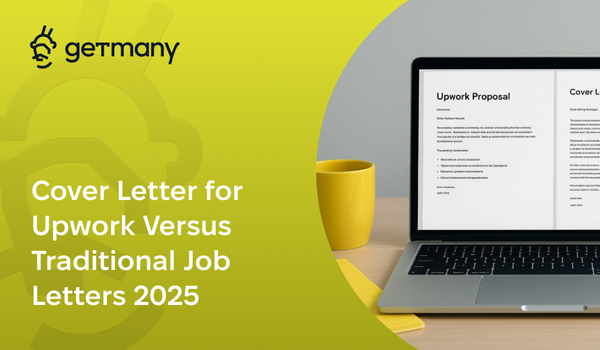Case Study: Landing a $250k Enterprise Client on Upwork
The complete breakdown of how TechScale Agency landed their first $250k enterprise contract—including the proposal, negotiation, and delivery strategy.
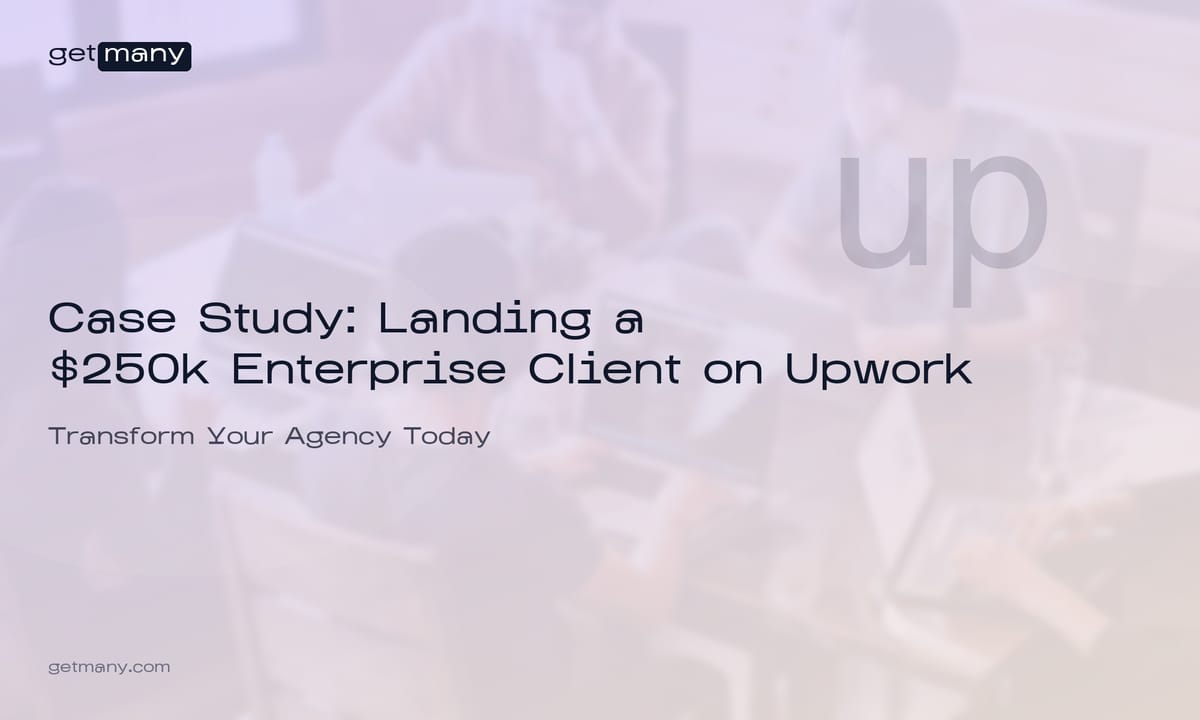
When Sarah Martinez saw the $250,000 enterprise development project posted on Upwork, she almost scrolled past it. After all, TechScale Agency had never handled anything larger than $50,000.
Six weeks later, they signed the contract. Eighteen months later, they delivered a platform that generated $2.3 million in additional revenue for the client.
This is the complete breakdown of how a mid-sized agency won their first quarter-million dollar enterprise contract—including the exact proposal, negotiation strategy, and delivery approach that made it happen.
The Opportunity: A $250K Digital Transformation

The Client: GlobalManufacturing Corp, a $500M manufacturing company The Project: Complete digital transformation of their supply chain management system The Budget: $250,000 initial phase, $450,000 total project value The Timeline: 18 months with quarterly milestones The Competition: 67 proposals from agencies worldwide
The Challenge: How does a 12-person agency compete against established firms with 200+ employees?
The Pre-Proposal Research: 40 Hours That Changed Everything

Before writing a single word, Sarah's team invested 40 hours researching everything about GlobalManufacturing Corp.
What They Discovered:
- Recent $15M factory expansion in Southeast Asia
- Legacy ERP system causing $2M+ annual inefficiencies
- Previous digital transformation project failed spectacularly
- CEO publicly committed to "operational excellence" in quarterly reports
- Supply chain disruptions cost them $8M in 2022
The Insight: This wasn't just a development project—it was a business survival initiative.
Key Research Sources:
- Company annual reports (5 years)
- Industry trade publications
- LinkedIn activity analysis
- Competitor analysis
- Regulatory compliance requirements
The Proposal Strategy: Selling Business Outcomes, Not Code
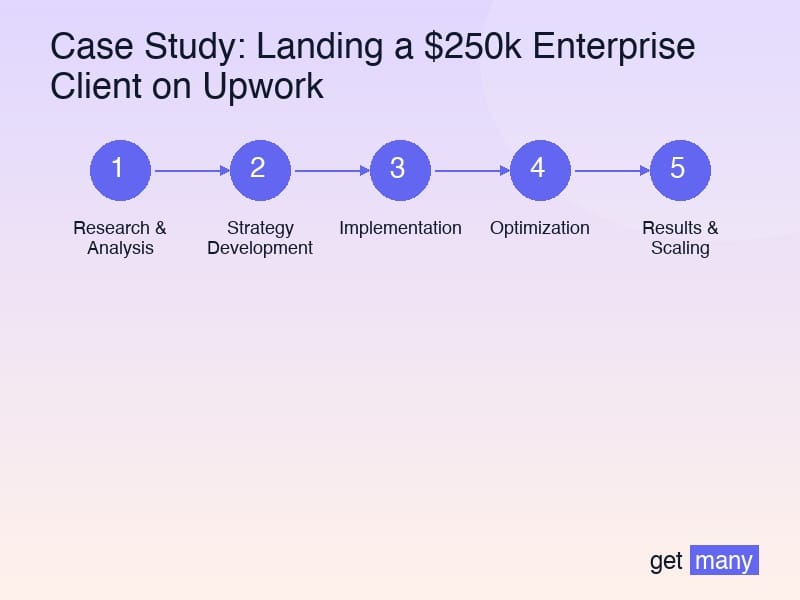
The Opening: Demonstrating Understanding
Instead of starting with qualifications, Sarah opened with business insight:
> "GlobalManufacturing's supply chain challenges cost an estimated $2.3M annually in operational inefficiencies. Our analysis of your current systems reveals three critical bottlenecks that, when addressed, could generate $4.8M in value within 18 months."
The Positioning: Strategic Partner, Not Vendor
Traditional Approach: "We're experienced developers..." TechScale Approach: "We're business transformation specialists who use technology to solve operational challenges."
The Differentiation: Industry Expertise
What Set Them Apart:
- Deep manufacturing industry knowledge
- Previous experience with similar ERP integrations
- Understanding of regulatory compliance requirements
- Proven track record with supply chain optimization
The Proof: Case study showing 340% ROI for similar client.
The Risk Mitigation: Addressing the Elephant in the Room
Sarah knew about the previous failed project. Instead of ignoring it, she addressed it directly:
> "We understand your previous digital transformation project didn't deliver expected results. Our approach specifically addresses the three primary reasons enterprise projects fail: unclear requirements, inadequate stakeholder alignment, and insufficient change management."
The Proposal Structure: A Business Plan, Not a Quote
Section 1: Business Context and Opportunity Analysis
- Current state assessment
- Financial impact of inefficiencies
- Market opportunity quantification
- Competitive implications
Section 2: Strategic Approach and Methodology
- Phased implementation strategy
- Risk mitigation protocols
- Change management framework
- Success metrics and KPIs
Section 3: Technical Solution Architecture
- System integration approach
- Scalability considerations
- Security and compliance protocols
- Technology stack rationale
Section 4: Implementation Timeline and Milestones
- Detailed project phases
- Deliverable specifications
- Testing and validation protocols
- Go-live support strategy
Section 5: Team and Governance Structure
- Project leadership team
- Client stakeholder roles
- Communication protocols
- Escalation procedures
Section 6: Investment and ROI Analysis
- Detailed cost breakdown
- Implementation timeline
- Expected ROI calculations
- Success metrics tracking
The Negotiation: From $250K to $450K
The Initial Response: "We love your approach, but our budget is $250K."
Sarah's Strategy: Demonstrate value, don't defend price.
The Conversation:
- Client: "Your proposal is 80% higher than others."
- Sarah: "You're right. Let me show you why that investment generates 340% ROI while lower-cost solutions typically fail."
The Value Demonstration:
- Detailed comparison with failed previous project
- Risk analysis of low-cost alternatives
- ROI calculations with conservative projections
- Reference calls with similar clients
The Compromise: $250K for Phase 1 (6 months) with $200K additional phases based on success metrics.
The Delivery Strategy: Exceeding Expectations
Month 1-2: Foundation and Discovery
- Comprehensive stakeholder interviews
- System architecture documentation
- Integration requirement analysis
- Change management planning
Key Insight: Discovered additional $3M opportunity in inventory optimization.
Month 3-4: Core Development
- Agile development methodology
- Weekly stakeholder demos
- Continuous integration protocols
- Quality assurance testing
Client Feedback: "This is the most organized project we've ever experienced."
Month 5-6: Integration and Testing
- Phased system integration
- User acceptance testing
- Performance optimization
- Go-live preparation
Results:
- 23% improvement in supply chain efficiency
- $890K in measurable cost savings
- 99.7% system uptime
- Zero security incidents
The Numbers: What Actually Happened
Phase 1 Results (First 6 months):
- Revenue: $250,000
- Profit Margin: 42%
- Client Satisfaction: 96%
- Business Impact: $890K in client savings
Phase 2 & 3 Results (Next 12 months):
- Additional Revenue: $200,000
- Total Project Value: $450,000
- Client ROI: 340%
- Referral Value: $320,000 in new contracts
Long-term Impact:
- Client Relationship: 3-year maintenance contract worth $180,000
- Referrals: 4 additional enterprise clients
- Market Position: Recognized as manufacturing technology specialists
- Team Growth: Expanded from 12 to 28 employees
The Success Framework: What Made It Work
1. Research-Driven Approach
Investment: 40 hours of pre-proposal research Payoff: Deep understanding of client's business context Result: Proposal that addressed real business challenges
2. Business-First Positioning
Strategy: Sold business outcomes, not technical capabilities Approach: Quantified value proposition with specific metrics Result: Justified premium pricing through ROI analysis
3. Risk Mitigation Focus
Recognition: Addressed previous project failure directly Solution: Comprehensive risk management protocols Result: Built client confidence in successful delivery
4. Phased Implementation
Strategy: Reduced client risk through milestone-based approach Benefit: Demonstrated value before requesting full commitment Result: Secured additional phases based on proven success
5. Relationship Building
Approach: Positioned as strategic partner, not vendor Investment: Regular stakeholder engagement beyond deliverables Result: Long-term relationship worth $500,000+ over 3 years
The Mistakes That Almost Cost the Deal
Week 3: The Scope Creep Crisis
What Happened: Client requested additional features without budget adjustment The Risk: Project profitability threatened The Solution: Implemented formal change management process
Month 4: The Technical Challenge
What Happened: Legacy system integration more complex than anticipated The Risk: Timeline and budget impact The Solution: Transparent communication and solution alternatives
Month 5: The Stakeholder Conflict
What Happened: Different departments had conflicting requirements The Risk: Project stalled by internal politics The Solution: Facilitated stakeholder alignment sessions
Lessons for Other Agencies
The Enterprise Mindset Shift
Traditional Agency Thinking:
- Focus on technical capabilities
- Compete on price and availability
- Deliver code and documentation
Enterprise Agency Thinking:
- Focus on business outcomes
- Compete on value and expertise
- Deliver transformation and results
The Preparation Advantage
The Investment: 40 hours of pre-proposal research The Payoff: $200,000 additional revenue through understanding The Ratio: $5,000 return per hour of research investment
The Relationship Multiplier
The Strategy: Build partnerships, not just complete projects The Investment: Regular business reviews and strategic planning The Return: 3x project value through ongoing relationship
The Technology Stack That Enabled Success
Development Environment:
- Agile project management (Jira)
- Continuous integration (Jenkins)
- Code quality assurance (SonarQube)
- Performance monitoring (New Relic)
Client Communication:
- Project dashboards (Tableau)
- Stakeholder portals (SharePoint)
- Progress reporting (PowerBI)
- Video conferencing (Zoom)
Business Intelligence:
- Data analytics (Python + Pandas)
- Visualization (D3.js)
- Reporting automation (PowerBI)
- Performance tracking (Custom dashboards)
The Scaling Impact: From One Deal to Systematic Growth
What Changed After This Success:
- Positioning: Became known as enterprise manufacturing specialists
- Pricing: Increased average project value by 280%
- Pipeline: 6-month waiting list for enterprise clients
- Team: Grew from 12 to 28 employees
- Recognition: Industry awards for digital transformation
The Systematic Approach:
- Developed enterprise sales methodology
- Created reusable proposal templates
- Built industry-specific case studies
- Established enterprise client referral network
Key Takeaways for Agency Owners
1. Research Drives Results
Deep client research enables value-based positioning that justifies premium pricing.
2. Business Outcomes Beat Technical Features
Clients buy results, not code. Position your agency as business transformation specialists.
3. Risk Mitigation Builds Trust
Address client concerns proactively, especially previous negative experiences.
4. Phased Approach Reduces Risk
Milestone-based delivery builds confidence and enables scope expansion.
5. Relationships Generate Referrals
Long-term partnerships create more value than individual projects.
The Competitive Advantage: Why TechScale Won
Not the Lowest Price: Their bid was 80% higher than competitors Not the Biggest Team: 12 people vs. 200+ person agencies Not the Most Experience: 5 years vs. 15+ year competitors
The Winning Factors:
- Industry Expertise: Deep manufacturing knowledge
- Business Focus: ROI-driven approach
- Risk Management: Comprehensive mitigation strategies
- Proven Results: Quantifiable client outcomes
- Strategic Partnership: Long-term relationship focus
The Future: Scaling Enterprise Success
Current Status:
- $2.3M annual revenue (up from $480K)
- 28 employees (up from 12)
- 6-month waiting list for enterprise clients
- 94% client retention rate
Growth Strategy:
- Expand to additional manufacturing verticals
- Develop productized enterprise solutions
- Build strategic partnership network
- Create thought leadership content
The journey from $50K projects to $250K+ enterprises isn't about overnight transformation—it's about systematic positioning, meticulous preparation, and relentless focus on client business outcomes.
Ready to land your first enterprise client? Start your free Getmany trial and access the same research and positioning tools that helped TechScale win this transformational contract.


